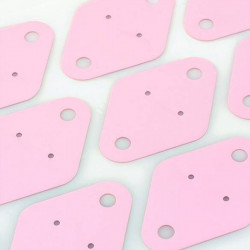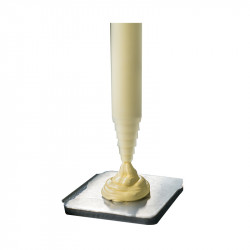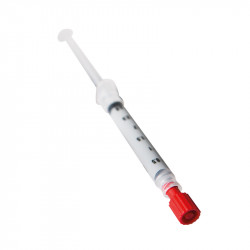Musíte být přihlášen
-
WróćX
-
Komponenty
-
-
Category
-
Polovodiče
- LED diody
- Tyristory
- Elektroizolační moduly
- Přemosťovací usměrňovače
-
Tranzistory
- Tranzistory | GeneSiC
- SiC MOSFET moduly | Mitsubishi
- SiC MOSFET moduly | STARPOWER
- Moduly ABB SiC MOSFET
- Moduly IGBT | MITSUBISHI
- Tranzistorové moduly | MITSUBISHI
- Moduly MOSFET | MITSUBISHI
- Tranzistorové moduly | ABB
- Moduly IGBT | POWEREX
- Moduly IGBT | INFINEON (EUPEC)
- Polovodičové prvky z karbidu křemíku (SiC)
- Przejdź do podkategorii
- Ovladače brány
- Bloky napájení
- Przejdź do podkategorii
- Měniče proudu a napětí LEM
-
Pasivní součásti (kondenzátory, rezistory, pojistky, filtry)
- Rezistory
-
Pojistky
- Miniaturní pojistky pro elektronické obvody řady ABC a AGC
- Trubkové rychle působící pojistky
- Pojistkové vložky s časovým zpožděním s charakteristikami GL / GG a AM
- Ultrarychlé pojistkové články
- Rychle působící pojistky (britský a americký standard)
- Rychle působící pojistky (evropský standard)
- Pojistky pojezdu
- Pojistkové vložky vysokého napětí
- Przejdź do podkategorii
-
Kondenzátory
- Motorové kondenzátory
- Elektrolytické kondenzátory
- Filmové kondenzátory
- Výkonové kondenzátory
- Kondenzátory pro stejnosměrné obvody
- Kondenzátory korekce účiníku
- Vysokonapěťové kondenzátory
- Indukční topné kondenzátory
- Kondenzátory pulsu a energie
- DC LINK kondenzátory
- Kondenzátory pro AC / DC obvody
- Przejdź do podkategorii
- EMI filtry
- Superkondenzátory
- Přepěťová ochrana
- Filtry pro odhalování emisí TEMPEST
- Svodič přepětí
- Przejdź do podkategorii
-
Relé a stykače
- Teorie relé a stykačů
- 3fázová střídavá polovodičová relé
- 3fázová střídavá polovodičová relé
- Regulátory, ovládací prvky a příslušenství
- Měkké spouštění a reverzační stykače
- Elektromechanická relé
- Stykače
- Otočné spínače
-
Jednofázová střídavá polovodičová relé
- Jednofázová střídavá polovodičová relé, 1 řada | D2425 | D2450
- Jednofázová střídavá polovodičová relé řady CWA a CWD
- Jednofázová střídavá polovodičová relé řady CMRA a CMRD
- Jednofázová střídavá polovodičová relé řady PS
- Dvojitá a čtyřnásobná střídavá polovodičová relé řady D24 D, TD24 Q, H12D48 D.
- Jednofázová polovodičová relé řady GN
- Jednofázová střídavá polovodičová relé řady CKR
- Jednofázová AC relé na lištu DIN řady ERDA A ERAA
- Jednofázová AC relé pro proud 150 A.
- Dvojitá polovodičová relé integrovaná s chladičem pro lištu DIN
- Przejdź do podkategorii
- Jednofázová AC polovodičová relé pro PCB
- Relé rozhraní
- Przejdź do podkategorii
- Jádra a další indukční součásti
- Radiátory, varistory, tepelné ochrany
- Fanoušci
- Klimatizace, příslušenství pro elektrické skříně, chladiče
-
Baterie, nabíječky, vyrovnávací zdroje a střídače
- Baterie, nabíječky - teoretický popis
- Lithium-iontové baterie. Vlastní baterie. Systém správy baterií (BMS)
- Baterie
- Nabíječky baterií a příslušenství
- Záložní zdroj UPS a vyrovnávací napájecí zdroje
- Převaděče a příslušenství pro fotovoltaiku
- Úschovna energie
- Palivové články
- Lithium-iontové baterie
- Przejdź do podkategorii
- Automatika
-
Kabely, dráty, vodiče, flexibilní připojení
- dráty
- Kabelové průchodky a spojky
- lanka
- Kabely pro speciální aplikace
- košile
-
prýmky
- prýmky byt
- prýmky kolo
- Velmi flexibilní opletení - plochý
- Velmi flexibilní opletení - Round
- Měď opletené válcové
- Mědí štít a válcové
- Flexibilní zemnící pásky
- Opletení válcovité pozinkované a nerezové oceli
- PVC izolované měděné pletivo - teplota 85 ° C
- Ploché pletené hliníkové
- Connection Kit - prýmky a trubky
- Przejdź do podkategorii
- Příslušenství pro trakční
- kabelové botky
- Ohebné izolované přípojnice
- Vícevrstvá ohebná lišta
- Systémy vedení kabelů
- Przejdź do podkategorii
- Zobacz wszystkie kategorie
-
Polovodiče
-
-
- Suppliers
-
Applications
- AC a DC pohony (střídače)
- Automatizace HVAC
- CNC obráběcí stroje
- Energy bank
- Indukční ohřev
- Komponenty pro prostředí s nebezpečím výbuchu (EX)
- Měření a regulace teploty
- Měření a regulace teploty
- Motory a transformátory
- Napájecí zdroje (UPS) a usměrňovací systémy
- Průmyslová automatizace
- Průmyslová automatizace
- Průmyslová ochranná zařízení
- Stroje na sušení a zpracování dřeva
- Stroje na tvarování plastů za tepla
- Svařovací stroje a svářecí stroje
- Těžba, hutnictví a slévárenství
- Tisk
- Tramvajová a železniční trakce
- Zařízení pro distribuční, řídicí a telekomunikační skříně
-
Instalace
-
-
Induktory
-
-
Indukční zařízení
-
-
Servis
-
- Kontakt
- Zobacz wszystkie kategorie
Thermally conductive materials in power storages

In electric engineering the technological development caused a need to search for new solutions in heat conduction.
The appearance of the thermal-conductive materials on the market made it possible to modernize (mostly miniaturize) application. It became possible due to the thermally conductive abilities of these elements and their electrical insulation. With time, it started to be considered to use them in power banks, which under high temperatures work significantly worse and have more errors.
While designing cooling systems many factors have to be taken into consideration:
- electric resistance (insulation and resistance)
- resistance to external factors (temperature, shocks, dust)
- average and max power of the device
- max working temperature
- cooling system efficiency
- smoothness/porosity of the cooling surface
The most important characterizing parameters of thermally conductive materials are:
Heat conductivity - it is an amount of heat that will flow through a given material in particular conditions and time. Each material has a different value of thermal conductivity, thus not all of them are suitable for heat conduction applications. In thermally conductive materials, mixes of metal oxide particles (filler) are most often used, in various sizes and shapes, to achieve the right value of conductivity.
Thermal resistance - it is a value of resistance which the material offers to the heat flow. In cooling systems, thermal resistance has a huge significance - we want to choose the material with the lowest thermal resistance to achieve the best results in heat conduction. One of the main goals of such applications is to remove air gaps between surfaces of the connectors, because the air has a big thermal resistance.
Types of materials used in battery storage:
Thermally conductive glues - special glues prepared for work in difficult conditions. They are resistant to high temperatures and do not dry, thus can keep their properties for a long time. The usage of the glue increases heat conduction, while connecting the joints, which allows eliminating from the application the need to use screws or clamps. Mostly used for stabilizing and locating the accumulator’s cells, thus decreasing the number of errors while providing an optimal heat conductivity.
Gap fillers (GFL) - are thermal mixes which can be used for encapsulation of the devices and covering the radiators and enclosure’s covers. Their important advantage is the simplicity of application, which allows for protection of complicated geometries. These materials are usually used to create a so-called “conduction track.” This solution increases thermal properties, amortization and application’s stability. Additionally, fillers increase the electrical insulation, which makes the usage of the electric device much safer.
Filling materials - structurally very similar to gap fillers, however, have different mechanical and electrical properties. Filling materials are foils with precise geometry, provided in the shape of sheets or cut out in a special shape of the elements. They are adjusted to compensate for the irregularities of the components, thus most effectively eliminating air bubbles and gaps, and can be used in applications sensitive to pressure.
What are the benefits of using thermally conductive materials?
While analyzing the influence of temperature on the accumulators, it is crucial to notice that variable temperature is a factor that significantly affects the productivity of the battery. The increase of temperature above the recommended one by the suppliers can cause drops in capacity, which can reach up to 50% of the accumulator’s capacity. Work in the wrong temperature can lead to battery aging and increasing its failure frequency. Thus, using materials for effective heat conduction to maintain optimal temperature allows a power storage to work longer and be more efficient.
Thermally conductive materials also allow stabilizing accumulator’s cells towards the vehicle, protecting it from mechanical damages. It is crucial because possible shocks to the power storage can cause active mass of the plates to fall out from cells. This on the other hand leads to the decrease of capacity of the accumulator or, in extreme cases, to internal short circuits. This type of failure damages the accumulator and requires its replacement.
In power storage, errors connected to tidal currents occur. They pose danger to people located in the area. Tidal currents can occur due to: dirty battery block, leakage of the electrolyte through the battery’s enclosure or by occurring cracks and gaps in the battery’s enclosure. Usage of the filler increases electrical insulation, which makes the operation of the system safer and more durable.
Conclusions
Thermally conductive materials can be used in applications producing significant amounts of heat, or in discussed power storage. By using thermally conductive materials we can increase the safety of accumulators and batteries’ exploitation. They provide stabilization of working temperature of such storage, making it possible to be used longer, achieving the highest productivity. In applications at risk of vibrations it is worth considering using fillers to minimize the mechanical damages of accumulators due to the shakes.
After analyzing the benefits of thermally conductive materials in power storage applications it can be stated that they are a cost-efficient investment, which allows to limit the costs connected to the exploitation and service of such devices, providing protection and helping to maintain proper work conditions.
Související produkty
Související příspěvky
 Now available – DC/DC converters from PREMIUM
Now available – DC/DC converters from PREMIUM
 New release in DACPOL lighting for lathes – Kira covers
New release in DACPOL lighting for lathes – Kira covers







Zanechat komentář